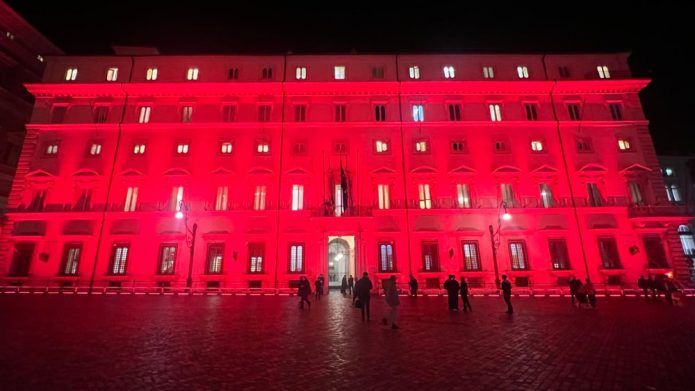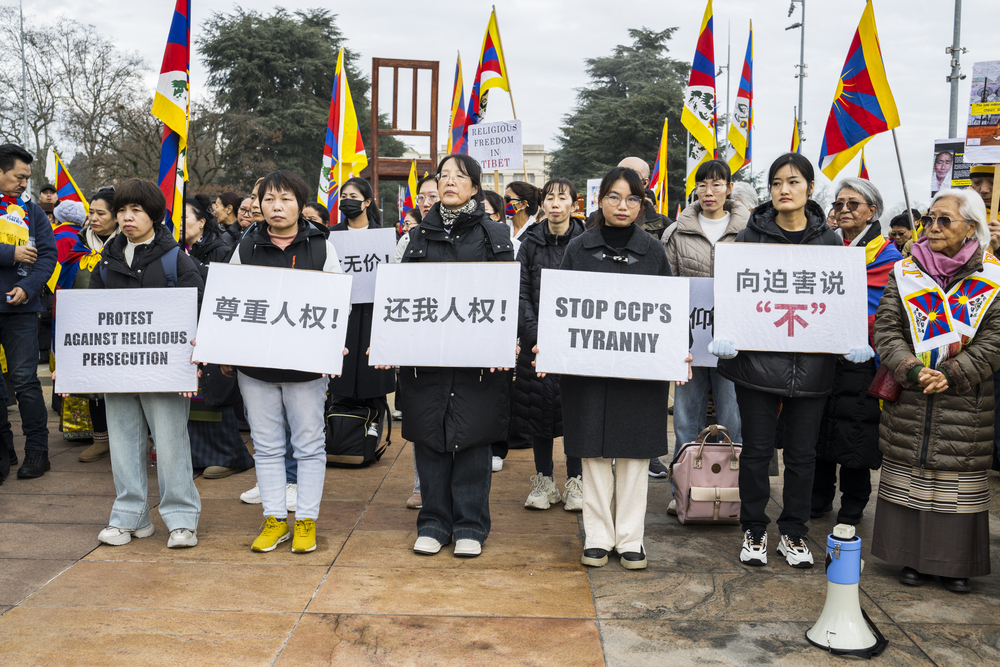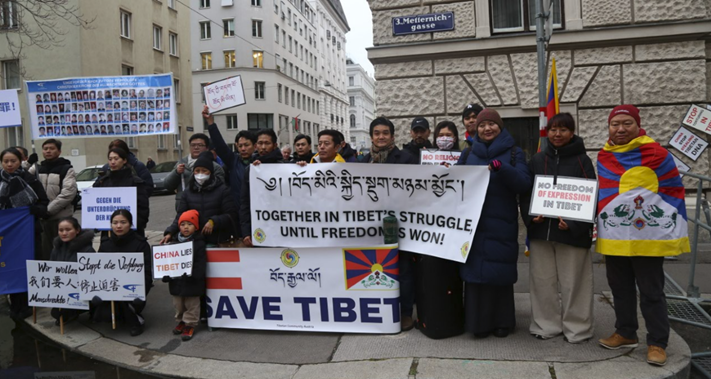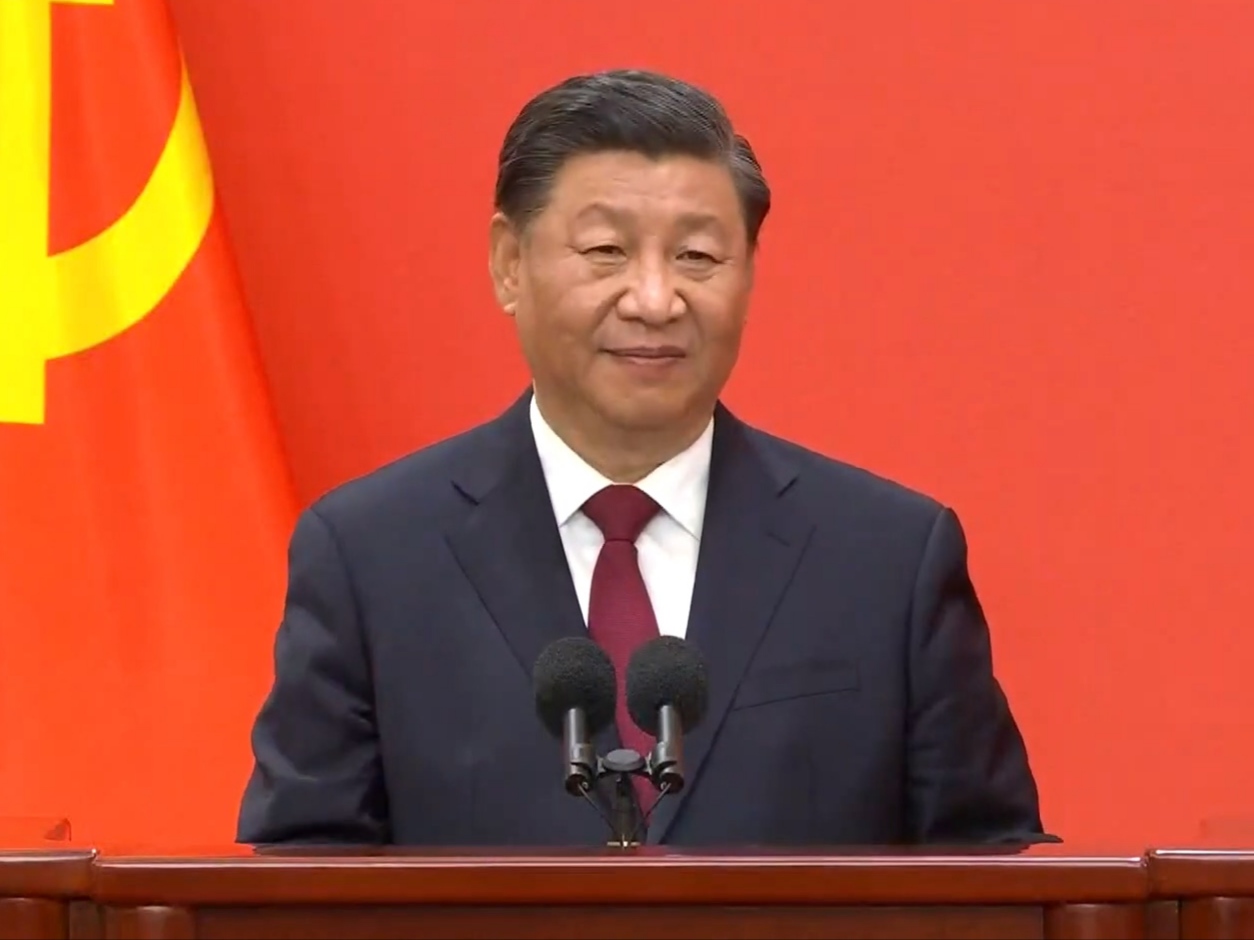Daniel H. Williams is professor of patristics and historical theology at the Department of Religion of Baylor University in Waco, Texas. The author or editor of six books, he has also been active in teaching in China since 2006. He has lectured at five major universities in mainland China, served as a plenary speaker at People’s University of China’s Summer Institute conferences, and has had several articles published in the Journal for the Study of Christian Culture. In the summer 2009, he was Visiting Professor at the People’s University in Beijing. His book Retrieving the Tradition has been translated and published in 2011 by China Social Sciences Press, and reprinted in 2016. He is presently co-director of the Center for Hellenism and Late Antiquity at Shandong University in Jinan.
Professor Williams’ insights into early Christianity in China go well beyond history and archeology. His work demonstrates that Christianity is not a “foreign” religion in China and in fact reached China before it arrived in some European “Christian” countries. Since the “non-Chinese” character of Christianity is a perennial favorite argument of anti-Christian propaganda in China, and a justification why Christians should be kept under close watch and limited in their religious liberty, the work of Professor Williams is both timely and relevant for the issues we discuss daily in Bitter Winter.
Professor Williams, a certain propaganda portrays Christianity as a “foreign” religion in China. You have studied the so called Nestorian monument erected in 781 near Xi’an, Shaanxi. Do you believe the monument invalidate this theory?
It is easy to overstate the significance of the monument. But it should not be understated either. The monument was rediscovered in 1623 and has played a historically active role since that first rediscovery. In April 1690, the Jesuit effort in China, almost a century after the Italian Jesuit missionary Matteo Ricci (1552–1610) had first entered the country, was still seeking to gain the complete trust of the emperor in Beijing. Chinese Christians had been recently imprisoned in Shantung Province (Shandong) as followers of a false and seditious cult. Several French Jesuits expressed hope for their release through a Manchu court official, Xao X’ang. Despite the Jesuits’ arguments in an interview, the emperor refused to become involved. It was then that Xao (not the priests) pointed out to the emperor that the Monument at Xi’an-fu “was a witness that Christianity in times past had flourished in China and had been treated honorably by his predecessors.” Apparently the statement so aroused the imperial curiosity that he asked for a copy of the monument’s inscription. Thereafter the emperor adopted a softer treatment of Christians in general.
A year later the emperor’s youngest brother visited the same priests with questions about Christianity. Specifically, he asked if the religion they represented was not the same as had entered China in the past. The Jesuits said that it was and explained that the Xi’an-fu monument was proof of this fact. This was the basis of a renewed plea for government protection of Christian believers. It was a year after this event that the Edict of Toleration was issued on March 22, 1692 by the Kangxi Emperor (1654–1722) of the Qing Dynasty recognizing the Roman Catholic Church, barring attacks on their churches and missions, and legalizing the practice of Christianity by Chinese people.
Who were these Nestorians, exactly?
A church struggling for survival today, the Church of the East—often called, erroneously, the Nestorian Church—had the distinction of carrying the Gospel over the largest tract of territory in church history; certainly far larger than the one encompassed by the Byzantine and Roman churches. By the end of the third century, Christianity had reached part of Arabia and northwest India. A century later finds Christians in Khorassan (eastern Iran), converting Turkic tribal groups that had moved into the region known today as northern Afghanistan and southern Uzbekistan. Churches in the East had begun to form their own identity in languages and cultures distinct from that of the churches in Alexandria, Ephesus, Chalcedon or Constantinople.
Apart from the more obvious differences of geography and languages, the Church of the East evolved with its own ecclesial/political characteristics. This branch of the Catholic faith never had a “Constantine” or ensuing long-term logistical support. Nor did its Church ever bear the burden of a becoming a theocracy. We have no example of Christianity being made a “state” religion in Central Asia. Although there were Kings and Emperors in Persia, in Bactria, China and Mongolia who at times tolerated or were even supportive of its mission, Christians suffered decades-long of persecution with the unfortunate result that its historical documentation does not have the same wealth of resources as the Latin and Greek Churches. Accordingly, the Church of the East never used force or political constraint to propagate itself. It simply proceeded along the major trade routes, serving small communities of faith, who spoke Sogdian—the lingua franca of the Silk Routes—as well as Uyghur, Old Turkish, Ongut, Chinese. It seems to have used Syriac in many of their liturgical expressions, but Christianity (unlike Islam) never joined itself to one language. Throughout its history, the Christian Scriptures have never been tied to a single tongue.
By the early fourth century, there were already metropolitan sees on the Arabian peninsula, in the double-city, Seleucia-Ctesiphon, the former Persian capital (19 miles NW of Baghdad), Arbela and Basra (also in Iraq), Merv (or Marv) (in Turkmenistan), Tehran, Herat (in western Afghanistan), and Sīstān (eastern Iran), had all been established by 424 at the latest. No later than the sixth century had a Christian witness established itself in western China,: eventually, metropolitan bishoprics were established in Xi’an and Peking, now long forgotten.
Undoubtedly the multiple geo-ethnograpical regions where Christian expression and practices existed would have varied from one another, perhaps significantly so as Christianity adapted itself to the mores and languages of particular locales. At the same time, we should expect essential similarities in liturgy, theology, etc., between churches in Iran and western China, not merely because there are inherently shared fundamental similarities, but because of the extensive network that was sustained between bishops and “metropolitan” bishops (area bishops). Perhaps more than any other vehicle, cross-communication and communion, was the strongest for preserving continuity of faith and practice.
And again the Nestorian Monument of Xi’an seems to be particularly important. Can you provide some further details?
There’s little more to say about the re-discovery of the so-called “Nestorian Monument,” except that it provides us with unique information about Christianity that had already come and was coming into China that cannot be found anywhere else in historical texts or stone inscriptions. Some historians are quick to limit the size and scope of early Christian influence in China. But who would have guessed the nature of its reception, the depth of its involvement and spread without the Monument? There were also influential families and army chiefs who were adherents of Nestorianism and provided huge support to its advancement in the T’ang society.The Nestorians arrived in China at a time most favorable for the propagation of foreign religions. Before AD 635, many merchants of Persian origin lived in Xi’an and undoubtedly, there were Nestorians among them. When their numbers increased, Bishop Alopen led a mission which arrived in the capital city of T’ang China to serve the Nestorian community there. Alopen and his team were warmly received by the T’ang court. They were granted permission to translate their sutras and teach its doctrine. This was in line with the T’ang Dynasty’s broad policy of toleration and interest in fostering foreign religions. When Alopen arrived in Chang-an, the Buddhists, having competed with Taoism and Confucianism for followers in the T’ang society, already had five centuries of successive growth in China. The complex religious scene of the T’ang society; with Buddhism, Taoism and Confucianism dominating the religious scene for centuries, meant that the Nestorians did not come to China when it was a philosophical and spiritual vacuum.
In 638, Alopen with the help of Chinese associates completed the first Christian book in Chinese: The Sutra of Jesus the Messiah. It was not a translation but rather a free adaptation to meet the needs of the churches in Xi’an. Scholars indicate that the original was likely to be in the Persian or Sogdian language rather than Syriac. The term “Uo-li-si-liam,” for instance, seems to be a transliteration of Jerusalem in the Persian tongue.
In this first Christian book in Chinese, Alopen took pains to show that Christianity contained nothing subversive to China’s ancient traditions. He pointed out that loyalty to the state and filial piety to one’s parents were not contrary to Christian teaching. The portrait of the Emperor T’ai Tsung (627-649), as we learn from the Nestorian Monument of 781, was in fact painted on the wall of the Nestorian monastic church, reminiscent of the portrait of the Emperor Justinian (483-565) in the Byzantine church in Ravenna.
But this early Chinese classic was not merely an apology for Christianity. It was an introduction to the Christian faith. The life of Christ from his birth to the passion was presented for the first time to Chinese readers. There is good reason to believe that there were several Nestorian monasteries outside Chang-an. In Loyang, a Nestorian monastery was erected in the Shau-hsien quarter, and there must have been Nestorian monasteries also in Tuan-huang, Ling-wu and perhaps in Szechuan.
And yet, shortly thereafter, Nestorian Christianity was wiped out of China. Or so we read in many textbooks. What happened, exactly?
It is well known that Nestorian Christianity suffered a serious setback in the reign of the usurping Empress Wu (624–705), a woman of great energy and ability. In 690, she proclaimed herself the founder of a new Chou dynasty. With the fall of the T’ang dynasty, there was a rapid decline of Nestorianism in China. In 986, a monk from Najran who had been sent by the Nestorian Patriarch to China in 982 was reported to have said, “Christianity is extinct in China; the native Christians have perished in one way or another; the church which they had has been destroyed and there is only one Christian left in the land.” Too much weight historically, however, has been placed on this single testimony and it should not be taken seriously as an accurate report for the whole Chinese Nestorian Church.
Some insist that the Nestorian Church was one of Persian and Central Asian expatriates. As such, it is argued that it was not a Chinese form of Christianity and it does not prove that Christianity has ancient roots in China. How would you answer this objection?
The very fact that the religious liturgy of the Nestorian Monument was written in Chinese is sufficient to show that there must have been a number of Chinese in the Nestorian congregations. Moreover, in the persecution of religions in 845 we learn that, besides foreign monks of Persian or Central Asian origin, there were a number of Chinese monks serving the Nestorian Church. Like the Buddhists and Taoists, these too were compelled to return to lay life and resume their original callings and pay taxes. It is unknown to what degree Christianity survived in China, but the extirpation of any religious sect is notoriously difficult. There are no questions about its presence in central Asia. Syriac writers and early Muslim historians mention Christian communities in Central Asia. In the thirteenth century, when Rabban Sauma (ca. 1225–1294) traveled from China through Central Asia on his way to the West, he reported on the Christian communities with which he stayed . Also in the thirteenth century a meeting is recorded between a Christian (Tarsā) leader and the Daoist Changchun (1148–1227) during the latter’s travels in Central Asia to meet Genghis Khan (r. ca. 1162–1227).
Our knowledge of the Church of the East in China has been augmented by a number of Christian texts in Chinese found at Dunhuang among a large hoard of Buddhist texts. These documents probably came from a Christian monastery at Dunhuang (ancient Shazhou). They include hymns and sermons. The latter clearly were composed for a Chinese audience using scriptural material in Syriac, but they are not close translations. Their main purpose was to show the Confucian authorities that Christian monotheism was philosophically sound, and that Christians adhered to the highest moral and ethical principles.
And the links between China and Samarkand were, at any rate, continuous and important. What about Christians there?
Samarkand appears to have been the main center of the Church of the East in Central Asia at the time of the arrival of East Syrian Christians at the Chinese capital of Xi’an in 635. There may have been a metropolitan further east at Kashgar (Kāshi) by the eighth or ninth century, but not until the twelfth century do we have confirmation of one. Although no early Christian buildings have been discovered at Samarkand, Marco Polo (1254–1324) reports seeing a rotunda church dedicated to John the Baptist when he visited the city in 1272. The Armenian high constable Sempad (1208–1276) had also visited the city in 1248 and describes seeing a church in which he saw a painting of Jesus and the three Magi.
At Urgut, 40 km south of Samarkand in Uzbekistan, a number of stone inscriptions written in Syriac and with carved crosses dating from the ninth century have been found. Recent archaeological excavations in the vicinity have revealed a structure that has been identified as a Christian building. This could be the site of a monastery described by the Muslim chronicler Ibn Hawqal (?–978) when he visited the area around 969. He writes, “Near Samarkand ones sees a monastery of the Christians, where they gather and have their cells. I encountered many Christians from Iraq, who moved here on account of the good and remote location and the healthy climate. ” Also south of Samarkand, from the Hephthalite city of Penjikent, in Tajikistan, is an eighth-century ostracon with lines from the Peshitta version of Psalms, written in Syriac. And at Termiz in Uzbekistan, near the Oxus River, archaeologists have discovered two churches and a baptistery.
Do some archeological discoveries suggest a connection with China?
Yes, and of course there will be more discoveries in the future. In 1995, the Christian hymn “Gloria in excelsis Deo,” written in Sogdian around the 8th c., was located in Turfan. Seeing that Sogdian was one of the primary languages of the Silk Routes, it is likely this document came to China and was used by a Christian congregation. A Chinese version of the hymn was also translated from Syriac.
In 2009, the discovery of a Christian site in China has been verified as a historical site of the Assyrian Church of the East in China (again, the so called Nestorians). In the Longmen Grottoes in central Henan Province was found a repository for the ashes and bones of Christians. It is described as a niche in a stone-wall with a cross above it.
Some may believe this is important only for historians and archeologists. You seem to suggest that these archeological discoveries matter for the present of Christianity in China. Can you explain why?
Yes, the implications of these discoveries are having a hard time being understood. Every time Christianity is identified as a Western phenomenon that is actually foreign to Chinese soil, a longstanding mythology is further propagated. This is a mythology that serves to sever any bond between modern China and the ancient Christian presence. But the mythology is best fueled by half-truths or historical interpretations that provide inconclusive evidence, such as that early Christianity ultimately failed in China because it never became sufficiently indigenous with the Chinese people That is, the Ta’ Xin remained too foreign and missionary for it to become Chinese. Of course this is a point that is hard to comprehend conclusively either way. The only place in the world where Christianity is not foreign is Jerusalem.
An opposite view, sometime attached to the “mythology” is that Christianity after the 8th c. became too syncretistic; adopting Buddhist or Taoist terms, symbolic imagery, etc. Churches eventually lost their own identity as they strove to become Asian. Apart from the lack of evidence for such a view, it is a mistake to assume syncretistic strategies must suffer the eclipse of their original identity. The prevalence of the Manicheans in Asia is a good case in point. They lasted longer in Asian contexts than in the Roman Empire, despite their penchant to absorb religious customs in dress and practices of the Buddhists or others around them. For it was simply a matter of what geographical, social and political climate they found where their Christian faith could best flourish.
Should not the fact that this Christianity was persecuted lead us to conclude that it was perceived as foreign and incompatible with the Chinese ethos?
In fact, another mythological element is that because Christianity was supposedly driven from China by later dynasties or persecution, this indicates it must not have been compatible for Chinese people. One might be tempted to think that the Christian faiths that came much later with the Dutch, English, Americans and others is simply another stream that is trying to deprive China of her true identity and culture. In response, I would want to claim that the Christians from Europe and North American originate from the Christianity that began in the Roman Empire and a large part of which became what is called “Western.” The Christians who trickled into China and who suffered religious prosperity and loss, originate from a different but parallel root of the Christian genealogy, namely, Persian, Syrian and Arabian. It was to these places that the “Ta-Xin” of the Nestorian Monument refers.
Another theory is that Chinese Christians, as soon as Islam manifested itself, converted to it en masse to the near extinction of Christianity, which supposedly proves that Islam is less foreign to the Chinese ethos than Christianity is. Is this confirmed by the historical record?
No recent scholars accept this perspective. It is necessary to look at Central Asia during the Pax Mongolica in order to understand that Christianity was not totally eclipsed by Islam in the period from the eighth to the twelfth centuries. At the start of the thirteenth century several Asian tribes had Christians in their midst. Among these tribes were the Naiman, Merkit, Önggüt, Kerait, Tangut, and Qara Khitai. Any suggestion, however, that whole tribes had converted to Christianity should be treated with caution. From the middle of the thirteenth century, we hear of Christians among the Mongols from the reports of papal envoys and merchants traveling through Central Asia to the court of the Great Khan. In particular, the Latin missionaries Giovanni da Pian del Carpine (1182–1252) and William of Rubruck (c. 1220–1293), upon their arrival among the Mongols, report of their religious tolerance and the influence of Christian “Nestorians” who lived throughout Mongol lands. Supposedly, Rubruck tells how he witnessed the baptism of sixty people on Easter Eve, and that in the church near Karakorum, the “Nestorians” celebrated Eucharist. Certainly, as Mongol power faded the situation for the Christians became much more precarious. But here we hear again how western Christians encountered Asian Christians and that the latter still existed in sufficient numbers for reports about their churches to be made.
In conclusion, would you say that everybody should now accept as a fact that Christianity is not a recent import to China but has been there from time immemorial?
What I would say is that, despite great distances from their spiritual homelands, Christian communities flourished throughout Central Asia and China. That they did so is a witness to their strength and sense of identity as minorities in hostile environments. Christianity always remained a minority religion in these areas, yet its message and influence certainly were acknowledged by different rulers over the centuries. To say that the Jingjjao, the Chinese Nestorians, became extinct is impossible to prove yet widely assumed. It is just as possible that the remanent of the older Asian Christianity was slowly assimilated by the European missions which continued to enter Asia and China over the next few centuries. If this is an accurate way of stating the situation then it is not surprising that little of the Jingjiao or “Nestorian” Christianity remains. Nonetheless, the historical fact will always remain that the roots of the Chinese presence of Christianity go back to antiquity. If some Chinese say Christianity is foreign to China then it is just as proper to say it is foreign to all the West too. The Christian message comes to Ireland about the same time it entered into China. We must acknowledge that Christianity has an ancient heritage in the West as well as in the East. If anything, the difference between the two is that the Christian “light” is slowly being snuffed out in the west whereas in the East, it may be persecuted, but it is growing rapidly and having an impact on Chinese culture.
Source: BITTER WINTER












